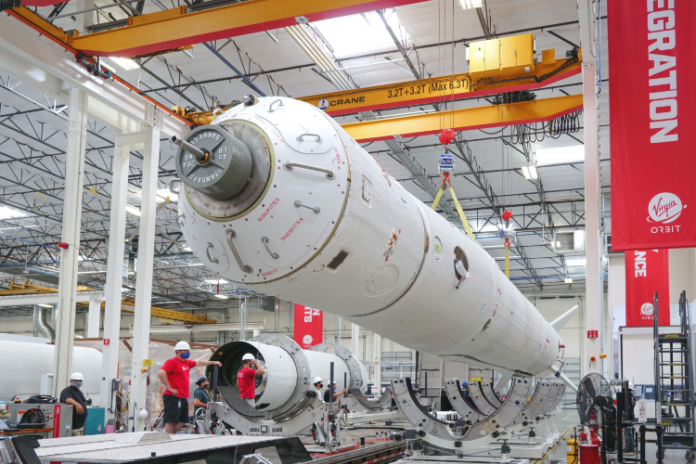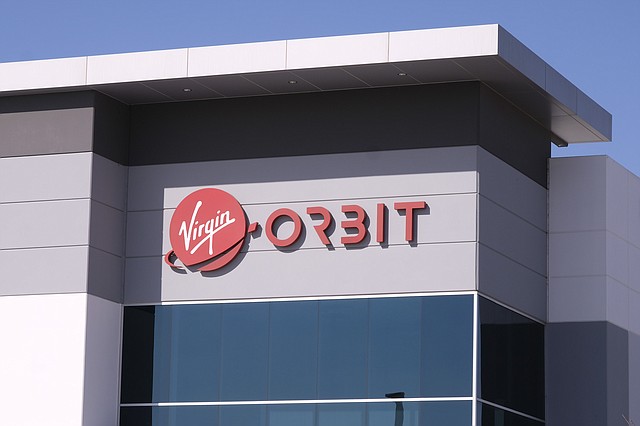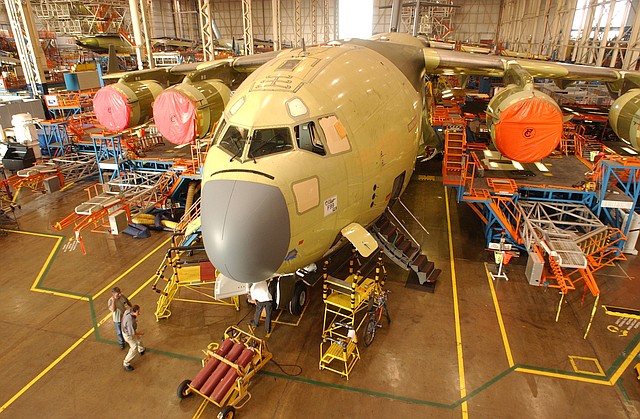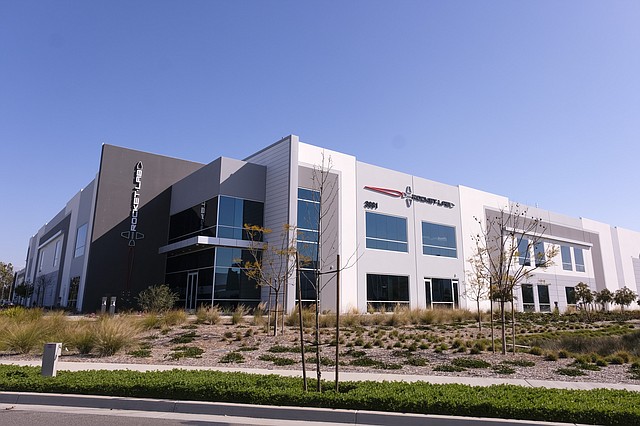Companies including Relativity Space Inc., Rocket Lab USA Inc. and Virgin Orbit have established their headquarters in the city over the past few years, bringing thousands of local jobs and millions of dollars in payroll.
These newcomers join companies such as Boeing Co. and a wealth of support businesses that have long had a presence in Long Beach, in part because the city offers access to a wide talent pool.
“Long Beach is very clearly the headquarters choice for several modern space innovators,” said Seiji Steimetz, professor and chairman of economics, and director of the Office of Economic Research at Cal State Long Beach.
Long Beach — where Amelia Earhart fell in love with flying in 1920 — has a storied aerospace history that ramped up in the mid-20th century with military and commercial aircraft manufacturing. Over the past few years, the region has reemerged as a center of aerospace innovation to the degree that Steimetz has nicknamed it “Space Beach.”
High-paying jobs
High-paying jobs
Steimetz said aerospace companies are attracted to the region’s high concentration of talented engineers, along with younger talent that can be recruited from local schools such as UCLA, USC and Cal State Long Beach.
“There is a concentration of a certain type of talent pool,” Steimetz said. “And when you have a concentration of a certain type of talent for that, it makes sense for companies to locate near them.”
With good pay and extensive opportunities, Long Beach is an attractive area for these recruits, Steimetz added.
According to Economic Modeling, or Emsi, a labor market and economic data platform, average total take-home compensation in the aerospace industry in Long Beach is $144,099 a year. For comparison, the median household income in Long Beach was $63,017 in 2019, according to Census Bureau data.
Steimetz said job opportunities in Long Beach are on the rise. Since the start of 2021, aerospace postings have shot up 120% in the region, to 279 in July from 105 in January.
The aerospace industry represents 5.2% of Long Beach’s payroll. Steimetz said he estimates the sector’s total payroll in the city is quickly approaching $600 million annually.
“It should be noted that the share of payroll is considerably higher than the share of employment,” Steimetz said. “That’s because these are high-paying jobs.”
Several of the large companies rely on aviation suppliers that have called Long Beach home for decades, he added. These smaller businesses have long served commercial and military aircraft production in the area.
Part of what makes Long Beach special is its aviation history. Companies such as Wyatt Precision Machine Inc., Plasidyne Engineering and Manufacturing Inc., and NC Dynamics have each called the city home for more than 40 years, supplying parts for aerospace manufacturing.
Steimetz cited data from Pacific Gateway Workforce Innovation Network, a public agency based in Long Beach, that said direct and indirect aerospace employment, which includes suppliers, totals around 6,500 jobs in the city.
“When industries concentrate together, they can be near the talent pool, and they can be near the supply chain,” Steimetz said. “And there are efficiencies and cost savings associated with being concentrated together.”
Moving in
Moving in
But Long Beach has long been a hub for aerospace and aviation innovation, thanks in large part to Douglas Aircraft, which churned out military aircraft from its Long Beach plant at the rate of one plane an hour at the peak of production during World War II.
In 1967, Douglas merged with McDonnell Aircraft, creating McDonnell Douglas Corp., which was acquired by Boeing in 1997. The acquisition allowed Boeing to compete with fellow aerospace giant Bethesda, Md.-based Lockheed Martin Corp.
Boeing, meanwhile, relied on Long Beach for production of its C-17 Globemaster III, a large military transport aircraft. That project ramped up in 2008 and increased local direct aerospace employment to 9,500, Steimetz said. Globemaster work slowed in 2013 when orders began drying up and officially ended in 2015, leading to a drop in local employment.
Still, Boeing retains several divisions in the area, as well as its Global Design Center. The company also has more than 40 suppliers in Long Beach and spends more than $86 million annually in the city, the company said.
“There’s so much talent and diversity here in Long Beach that it makes the city so attractive,” Lynette McKinnon, director of Boeing’s design center and Long Beach site executive, said in a statement. “It’s the perfect place for continued design and development.”
Other aerospace companies enjoy the professional environment to be found in Long Beach.
In 2019, SpinLaunch, which develops mass accelerator technology, moved its headquarters from Silicon Valley to a 140,000-square-foot facility in Long Beach. Small-satellite launch provider Rocket Lab followed in 2020, moving its headquarters from Huntington Beach to Long Beach. And Virgin Orbit landed in the city in 2015 prior to spinning off from
“There’s a lot to love about Long Beach,” Virgin Orbit’s Head of People and Culture Johanna Kent said in a statement. “The breadth and diversity of the local talent has allowed us to build the best rocket team in the business, and … given Long Beach’s aerospace heritage, there’s an abundance of local high-quality suppliers that have been wonderful partners for Virgin Orbit. ”
Relativity Space, which is working to manufacture rockets using 3D printers, relocated its headquarters from Inglewood to Long Beach in 2020 and announced in July plans to expand its headquarters by 1 million square feet.
“Securing this space for Relativity headquarters … is key for scaling out our Terran R program, while also continuing to tap into the unparalleled talent here,” Tim Ellis, Relativity’s chief executive and co-founder, said in a statement.
Virgin Orbit
CEO: Dan Hart
BUSINESS: Small-satellite launch services
EMPLOYEES: 600
VALUATION: $3 billion
MAJOR CLIENTS: Defense Department, SatRevolution, Royal Netherlands Air Force
PLANNED LAUNCHES: 1 (2021); 6 (2022)
2021 LAUNCHES TO DATE: 3
ABOUT THE COMPANY: Founded by aerospace and aviation mogul Richard Branson, Virgin Orbit focuses on launching small, low-Earth orbit satellites. The company spun off from Mojave-based Virgin Galactic, Branson’s space tourism venture, in 2017.
Virgin Orbit conducted its first successful launch of a rocket, LauncherOne, in January, and has since performed two other launches. The company designs and manufactures its LauncherOne rockets in Long Beach. In June, Virgin Orbit was reportedly in talks with Boca Raton, Fla.-based special purpose acquisition company NextGen Acquisition Corp. II to go public through a merger.
Relativity Space
CEO: Tim Ellis
BUSINESS: 3D-printed rockets
EMPLOYEES: 500
FUNDING
TO DATE: $1.3 billion
VALUATION: $4.2 billion
MAJOR CLIENTS: NASA, Defense Department, Telesat, TriSept Solutions Inc.
PLANNED LAUNCHES: 1 (2021)
2021 LAUNCHES TO DATE: None
ABOUT THE COMPANY: Though 3D printing has been used by rocket-makers in the past to manufacture individual parts, Relativity Space is taking the concept a step further. The company creates entirely 3D-printed rockets using its massive Stargate printers, with the goal of eventually bringing humanity to Mars.
In the past 12 months, Relativity brought in nearly $1.2 billion in funding and announced plans to expand its headquarters by 1 million square feet at the Goodman Commerce Center in Long Beach. It also aims to double its staff by 2022. Relativity relocated from Inglewood to Long Beach in 2020. Companies on Relativity’s lengthy waitlist for launches include NASA, the Defense Department and Telesat.
Boeing Co.
CEO: Dave Calhoun
BUSINESS: Aviation
CALIFORNIA EMPLOYEES: 12,000
ANNUAL REVENUE: $58 billion
LOCAL SUPPLIERS: Long Beach Valve and Fitting Co., Shimadzu Precision Instruments Inc., Stantec Consulting Services Inc.
ANNUAL DOLLARS SPENT LOCALLY: $86 million
ABOUT THE COMPANY: One of the oldest and biggest aerospace and aviation companies in the world, Boeing has historically had a massive footprint in Long Beach. The company’s presence in the area dates to 1997 when it acquired McDonnell Douglas Corp., which was then a roughly 50-year-old aerospace company known for producing military and commercial aircraft.
Though Boeing shut down its C-17 project in Long Beach in 2015, which had brought thousands of jobs to the area, the company retains a footprint in the region with local divisions. These include its Global Services and AvionX divisions, as well as Boeing’s global design center. Boeing’s work in the Long Beach design center includes customer support operations, advanced concept engineering, and upkeep and support of the C-17 and other out-of-production planes.
Rocket Lab USA Inc.
FOUNDED: 2006
CEO: Peter Beck
BUSINESS: End-to-end mission services
EMPLOYEES: 550
FUNDING TO DATE: $290 million
MAJOR CLIENTS: NASA, Space Force, BlackSky Global
PLANNED LAUNCHES: 5 (2021)
2021 LAUNCHES TO DATE: 3
ABOUT THE COMPANY: Rocket Lab performed its first orbital launch in 2018, 12 years after the company’s founding. Since then, it has deployed 105 satellites on behalf of several major clients, including the Space Force, TriSept and BlackSky Global. Rocket Lab primarily launches satellites using its Electron rocket, its flagship vehicle, and relies on its Photon spacecraft, a satellite bus, to provide the infrastructure for a client’s payload.
The company is developing a Neutron rocket, a reusable, medium-lift vehicle capable of carrying 8,000 kilograms into low-Earth orbit. Rocket Lab recently announced that by the end of 2021 it will launch its first mission into lunar orbit as a part of NASA’s Artemis program under a contract worth nearly $10 million.





